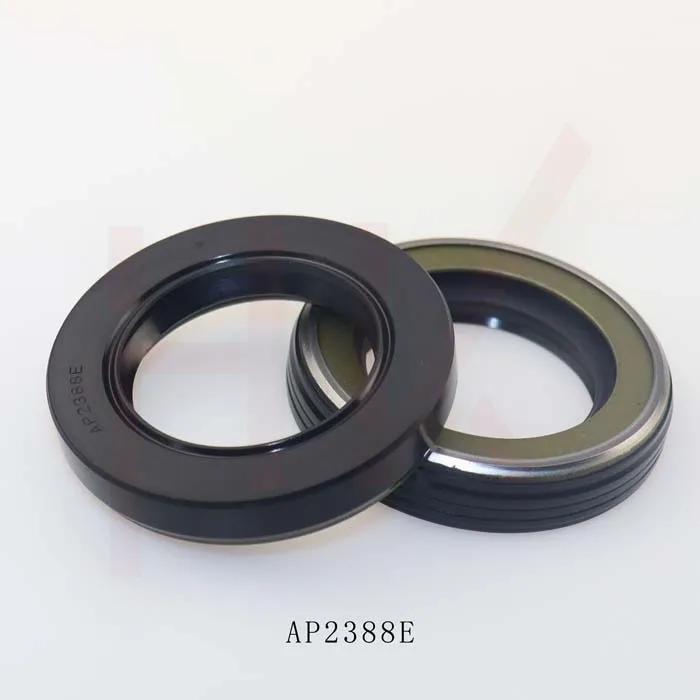Қар . 12, 2024 22:56 Back to list
hydraulic oil seal types
Understanding Hydraulic Oil Seal Types A Comprehensive Guide
Hydraulic systems play a crucial role in various industrial applications, ensuring efficient power transmission through the use of fluids. At the heart of these systems lie hydraulic oil seals, which serve as a vital component in maintaining the integrity and functionality of hydraulic equipment. Different types of hydraulic oil seals cater to various operational needs, and understanding these types can significantly enhance the performance and longevity of hydraulic systems.
1. O-Rings
O-rings are one of the most common types of hydraulic seals. These circular loops, typically made from elastomeric materials, are used to create a seal between two surfaces. They are versatile, cost-effective, and easy to install, making them suitable for low-pressure applications. O-rings are widely used in hydraulic cylinders, pumps, and valves. However, their effectiveness can be compromised in high-pressure or high-temperature scenarios, requiring a switch to more robust sealing solutions.
2. U-Cups
U-cups, also known as U-seals, are designed with a U-shaped profile that provides excellent sealing capabilities, particularly in hydraulic cylinders. These seals are ideal for dynamic applications where there is reciprocating motion. The design of U-cups allows them to maintain constant contact with the cylinder wall, minimizing the risk of leaks. U-cups are often made from materials like polyurethane or nitrile rubber, providing resistance against wear and various hydraulic fluids.
3. Lip Seals
hydraulic oil seal types

Lip seals, also referred to as radial shaft seals, consist of a flexible lip that creates a seal against a rotating shaft. These seals are effective in preventing leaks of hydraulic fluids while allowing for shaft movement. Lip seals are commonly found in hydraulic pumps and motors. They can handle moderate to high-pressure applications and can also be designed for high-speed operations, making them a popular choice in various hydraulic setups.
4. V-Rings
V-rings are unique in their design, featuring a V-shaped profile that provides a secure seal against a shaft while allowing axial movement. These seals are typically used in conjunction with other sealing elements and are often found in applications where space is limited. V-rings are particularly effective in preventing the ingress of dirt and moisture, making them suitable for harsh operating environments.
5. Composite Seals
Composite seals are a hybrid solution that combines multiple sealing technologies into a single unit. These seals can incorporate elements from O-rings, U-cups, and lip seals, providing enhanced sealing performance across a range of conditions. Composite seals are designed for complex systems where traditional seals may fail to provide adequate protection against leakage or contamination.
Conclusion
Selecting the appropriate type of hydraulic oil seal is critical for the reliability and efficiency of hydraulic systems. Factors such as temperature, pressure, fluid type, and the environment must be considered when making this decision. Understanding the different types of hydraulic oil seals—O-rings, U-cups, lip seals, V-rings, and composite seals—allows operators and engineers to tailor their sealing solutions to meet specific application demands. Proper seal selection and maintenance can prevent costly downtime and ensure optimal performance in hydraulic systems, ultimately contributing to the productivity of industrial operations.
-
The Trans-formative Journey of Wheel Hub Oil Seals
NewsJun.06,2025
-
Graphene-Enhanced Oil Seals: Revolutionizing High-Pressure Oil Sealing
NewsJun.06,2025
-
Future of Hydraulic Sealing: Advanced Intelligent TCN Oil Seals
NewsJun.06,2025
-
Don’t Let a Broken TCV Oil Seal Ruin Your Day
NewsJun.06,2025
-
Bio-Inspired Dust Seals for Better Sealing Performance
NewsJun.06,2025
-
Biodegradable and Sustainable Hydraulic Seal Materials
NewsJun.06,2025
-
Top Oil Seal Solutions for Your Industrial Needs
NewsMay.22,2025
Products categories
















